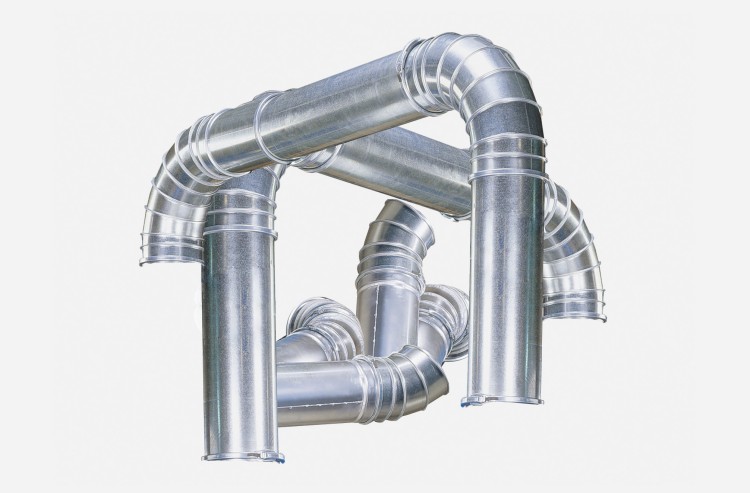Sizing Ductwork for Dust Collection Systems
The dust collector is the main ingredient in getting cleaner air for your shop, but if you can’t get the dirty air into the collector efficiently, you risk high energy usage, degraded collector performance, and unsafe conditions in the plant.

Ductwork is used to carry the dirt and air from the collection point to the collector. It must be sized properly to create a “carrying velocity” to keep dirt moving through. Duct sizing is based on 2 variables: the particulate being collected and the volume of air being moved. The heavier the dirt, the higher the air velocity needed.
Example Steel grinding dust conveyed @ 3500 feet per minute (velocity). A typical grinder uses 500 cubic feet of air per minute (cfm) to control dust. To move this much air, select an appropriate size of ductwork – in this example, a 5-inch diameter duct yields just over 3500 feet per minute for 500 cfm air volume.
If the ductwork is too small, two problems can occur:
Higher pressure loss (delta P) and higher energy usage because of higher velocity. Increase delta P will reduce air volume entering the collection hood, degrading the performance of the dust collector. If the ductwork is too large, two problems may happen:
If the volume of air is not increased, dirt will not be carried through the ductwork and material will collect inside. If the particulate is heavy, the ductwork will become heavier than the structure support can carry and may crash to the floor.
Bottom line
Correct sizing of the ductwork is a key factor in the dust collection system.
Certifications
Let Dust Collector Services helps with all your OSHA and NFPA requirements.

